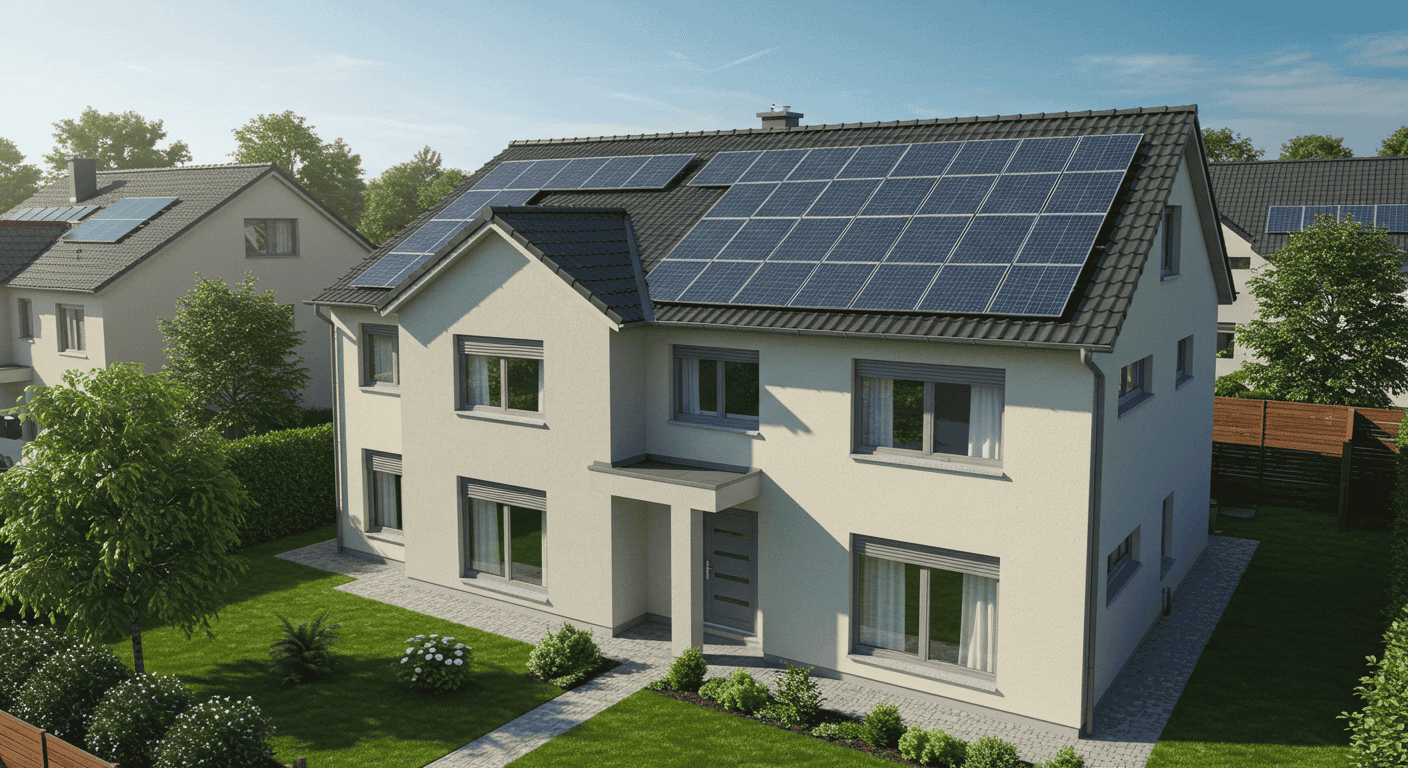Making the move to Solar Panels is one of the most impactful upgrades a home can undergo, delivering long‑term bill savings, energy resilience, and tangible emissions cuts while future‑proofing against rising utility rates and policy shifts that affect conventional power costs. Thoughtful planning pays off: assessing the roof, understanding equipment, selecting a financing path, and aligning system size with realistic consumption and future load growth unlock the best results from Solar Panels with a smooth installation and low‑maintenance ownership experience over decades. Beyond the economics, high‑efficiency modules, modern inverters, robust warranties, and consumer resources make it easier than ever to invest in Solar Panels with clarity and confidence from day one.
Understanding Solar Panels and How They Work
Solar Panels convert sunlight into electricity using photovoltaic cells that generate direct current, which is then inverted to usable alternating current for household loads, EV charging, and grid export where policies allow. For homeowners, this means a rooftop power plant sized to annual kilowatt‑hour needs, oriented and tilted for optimal irradiance, and paired with monitoring that verifies performance, detects issues, and documents savings from Solar Panels year after year. Because PV modules harvest both direct and scattered light, viable production is available across a wide range of climates, provided shading and roof condition are properly evaluated before installing Solar Panels.
The science of photovoltaic energy
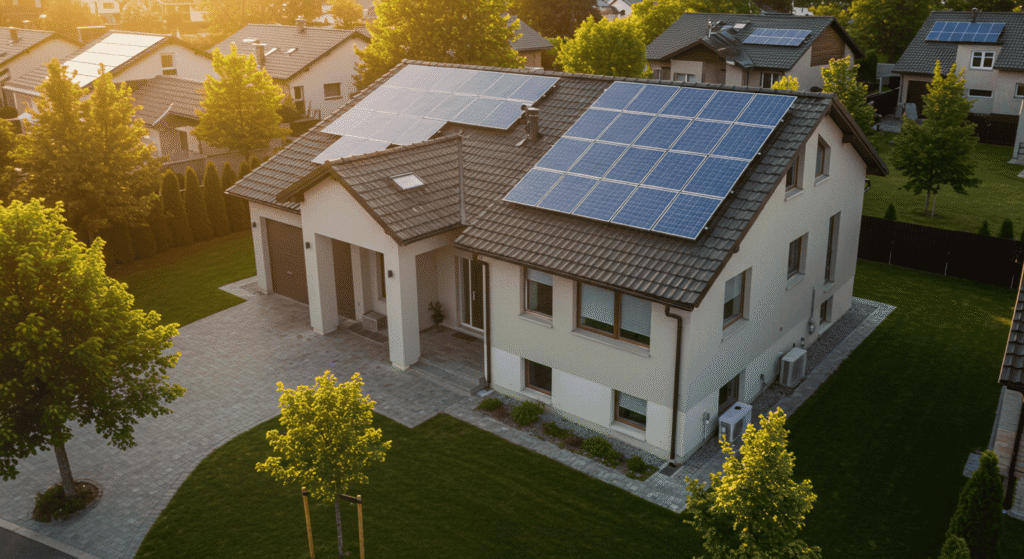
PV cells, typically silicon‑based, absorb photons that free electrons and create an electric field, producing current proportional to irradiance, cell temperature, and module characteristics in a process that underpins all Solar Panels. Module efficiency reflects how much incident solar energy is converted to electricity, and in practice residential panels commonly span roughly the mid‑teens to low‑twenties percentage range, with top products approaching the mid‑twenties as manufacturers adopt advanced N‑type cell designs for Solar Panels. System‑level efficiency also depends on inverter conversion, wiring, mismatch, soiling, and thermal effects, which is why design and maintenance choices materially shape the lifetime yield of Solar Panels.
Monocrystalline vs polycrystalline cells today
Modern markets have pivoted strongly toward monocrystalline modules, especially N‑type TOPCon, HJT, and back‑contact architectures that raise module efficiencies past 24% for premium Solar Panels. Polycrystalline products, once a budget mainstay, have largely faded due to lower performance ceilings and manufacturers’ shift to higher‑efficiency mono lines that better utilize limited roof space for Solar Panels. For homeowners, this translates to more power per square meter, higher production at the same footprint, and stronger long‑term value from contemporary monocrystalline Solar Panels.
Key Benefits of Installing Solar Panels
Residential Solar Panels deliver three core benefits: bill savings, energy independence, and carbon reduction, with comfort and resilience as complementary gains for electrifying homes and transportation over time. A careful assessment of usage, rate structures, and site irradiance helps quantify avoided utility purchases and informs whether to pair Solar Panels with batteries for backup or rate arbitrage under time‑of‑use billing. With policy clarity and accessible consumer resources, homeowners can plan, compare quotes, and move from research to operation with confidence in the value of Solar Panels.
Lower bills and predictable costs
Right‑sized Solar Panels offset a large share of annual consumption, reducing exposure to utility price hikes and providing a hedge that stabilizes household energy budgets over decades of production. Where available, net metering or similar export credit structures allow surplus daytime generation to offset evening usage, compressing payback times for Solar Panels and reinforcing the economics across seasonal swings in production and demand. Even in markets without full retail credit, optimizing self‑consumption with load shifting, heat pumps, and EV charging can enhance the savings profile of Solar Panels.
Incentives, financing, and payback
Public guidance documents summarize steps to evaluate incentives, select a financing pathway, and coordinate with utilities so Solar Panels are installed, interconnected, and credited smoothly from day one of operation. Loans, leases, and power purchase agreements each shape ownership, cash flow, and benefits; ownership keeps tax and equity value with the homeowner, while third‑party options may reduce upfront costs and simplify maintenance associated with Solar Panels. Clear estimates for system size, production, rate credits, and escalators provide a grounded payback view that aligns expectations with the real‑world performance of Solar Panels.
Types of Solar Panels for Homes
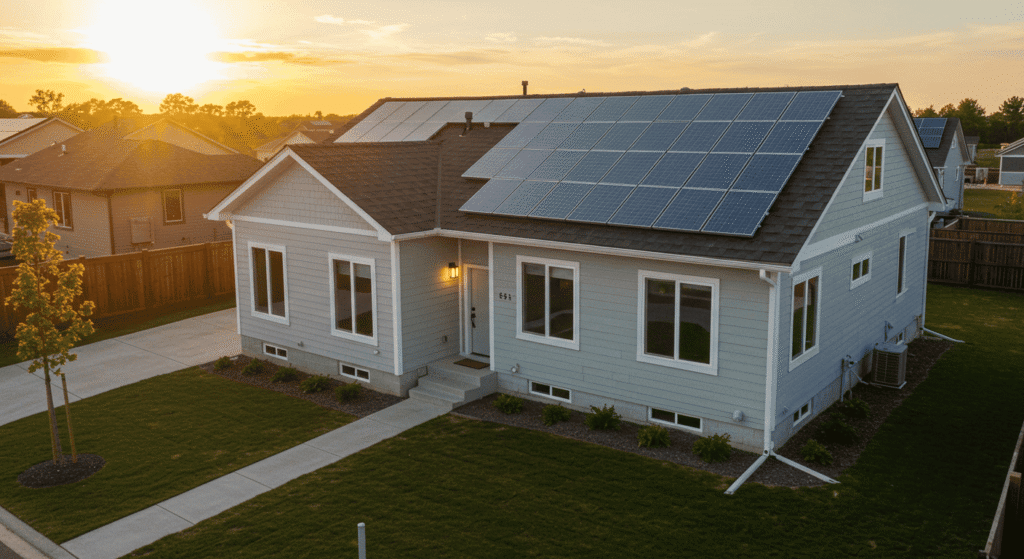
Product choices for Solar Panels now center on monocrystalline modules using advanced cell technologies, with differences in efficiency, heat tolerance, and aesthetics informing selection for specific roofs and climates. Efficiency leadership increasingly comes from N‑type architectures such as TOPCon, HJT, and back‑contact designs, which deliver higher output per area and improved degradation profiles compared to older PERC Solar Panels. For homeowners with constrained roof area or shaded sections, higher‑efficiency options can unlock target production without expanding the footprint of Solar Panels.
Monocrystalline and N‑type advances
State‑of‑the‑art Solar Panels leveraging N‑type cells push module efficiencies above 24%, with back‑contact variants concentrating current collection on the rear to maximize light absorption on the front face. These modules typically offer better temperature coefficients and durability characteristics that maintain higher real‑world output across hot summers, making them especially compelling for rooftops where thermal performance drives annual yield of Solar Panels. While premiums exist, they are often offset by higher production density and potential BOS savings due to fewer modules for the same energy target with Solar Panels.
Thin‑film and niche use cases
Thin‑film options occupy niche roles where weight, flexibility, or specific integration needs matter, but for most pitched‑roof homes, crystalline silicon Solar Panels dominate due to mature supply chains and warranty support. As integrated photovoltaics evolve, building‑applied products may expand choices, yet mainstream residential deployments will remain centered on high‑efficiency mono modules that optimize limited roof real estate for Solar Panels. When aesthetics or unusual roof geometries are priorities, product selection should balance visual goals with production needs for Solar Panels.
Planning and Sizing a Home System
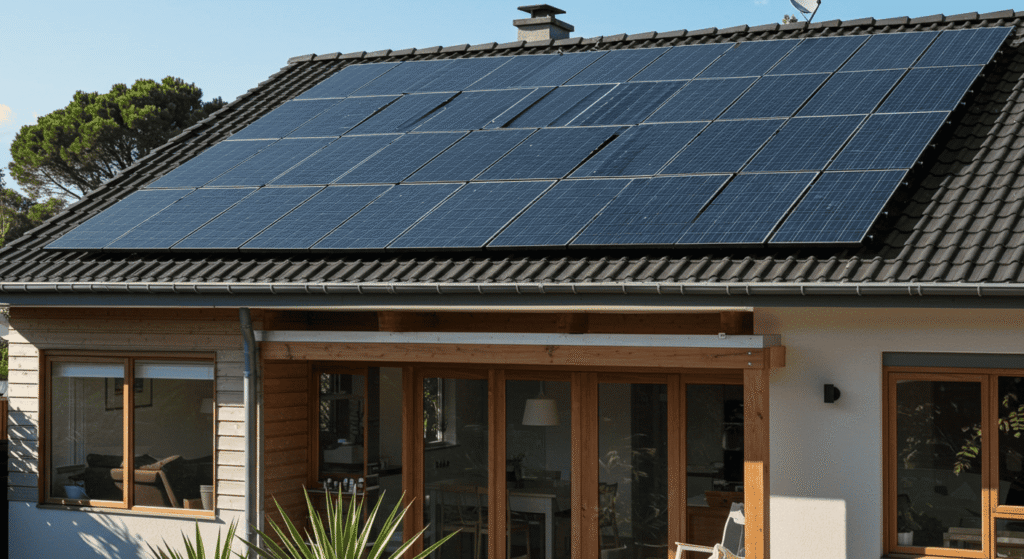
Successful Solar Panels projects start with efficiency first, then right‑sizing: conduct an energy audit, upgrade lighting and HVAC, and model future loads like EVs or heat pumps before locking system size. Solar potential mapping tools and contractor assessments quantify shade, tilt, azimuth, and structural constraints, enabling design iterations that align practical roof layout with expected annual generation from Solar Panels. Early review of HOA rules, roof age, and interconnection timelines avoids surprises and keeps the schedule on track for Solar Panels.
Evaluate usage and future loads
Gather 12 months of electric bills to capture seasonal usage and rate structures so the proposed Solar Panels system can offset a realistic baseline, not a single shoulder‑season snapshot. Discuss planned electrification—vehicle charging, induction cooking, water heating, or additions—to ensure the array and inverter plan has capacity headroom or expandability without major rework to Solar Panels later. Attention to envelope improvements, such as weatherization, can shrink the required system size and accelerate payback for Solar Panels.
Assess roof, shade, and orientation
Contractors evaluate shading from trees and structures, roof structure and remaining life, and the optimal orientation—often south‑facing in the Northern Hemisphere—to maximize annual production from Solar Panels. If reroofing is likely within a few years, schedule it before or alongside the PV project to avoid redundant labor and ensure uninterrupted operation of Solar Panels for decades. Accurate site data informs layout, wiring paths, and interconnection points that keep the installation efficient and tidy for Solar Panels.
Installation, Permits, and Interconnection
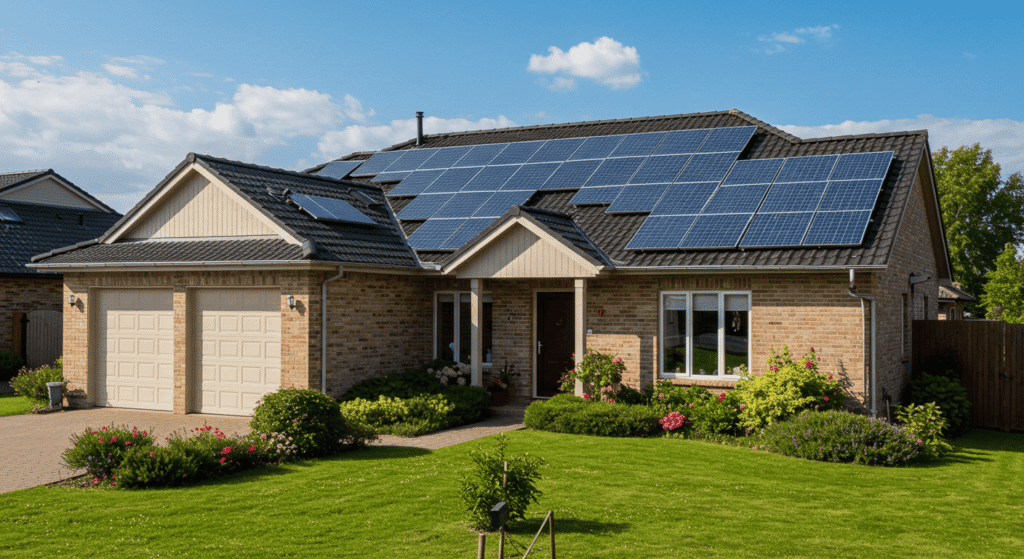
From contract to commissioning, installing Solar Panels involves permitting, inspections, utility agreements, and final approvals that culminate in safe energization and billing integration for credits where applicable. Reputable installers coordinate drawings, permit packages, and inspections while communicating schedule steps so homeowners understand each milestone on the way to switching on Solar Panels. Post‑install, monitoring applications offer production visibility and alerting, supporting both peace of mind and warranty documentation for Solar Panels.
Permitting and utility coordination
Local authorities review structural, electrical, and fire code compliance, while utilities manage interconnection agreements, metering changes, and any export limitations that govern operation of Solar Panels. Some jurisdictions streamline approvals, but sequencing still matters—submit complete packages and respond promptly to information requests to avoid delays that postpone energizing Solar Panels. Final inspection confirms proper labeling, disconnects, and conduit runs, paving the way for permission to operate the Solar Panels system.
Rooftop best practices
Quality mounting hardware, flashed penetrations, and wire management prevent leaks and abrasion, ensuring the roof remains weather‑tight for the life of the Solar Panels. Clear access aisles and firefighter pathways comply with code while simplifying future service, inverter swaps, and inspections without disturbing Solar Panels unnecessarily. A neat, code‑conforming array layout also supports appraisal value and buyer confidence should the home be sold with Solar Panels installed.
Inverters, Monitoring, and Batteries
The inverter is the brain of Solar Panels systems, converting DC to AC, managing maximum power point tracking, and feeding monitoring platforms that reveal performance trends and faults quickly. Homeowners can choose string inverters with optimizers, microinverters, or hybrids with battery interfaces, balancing cost, shade tolerance, and serviceability to suit their Solar Panels. Because inverter life is typically shorter than panel life, plan for mid‑life replacement and ensure mounting and access support straightforward service without dismantling Solar Panels.
Expected lifespans and upkeep
Panels often carry 25‑year performance warranties and can operate beyond 30 years, while inverters commonly last about 10–15 years before replacement on most Solar Panels systems. Routine cleaning of inverter vents, visual checks for heat discoloration, and periodic professional inspections help extend reliable service life and maintain high conversion efficiency for Solar Panels. Monitoring production against expected baselines makes it easier to catch early degradation, tripped breakers, or arc‑fault issues in the balance of system for Solar Panels.
Battery pairing and rate strategies
Adding storage can shift daytime PV into evening peaks, improve backup resilience, and reduce demand charges where applicable, strengthening the value stack of Solar Panels. Hybrid inverters or AC‑coupled batteries enable time‑of‑use optimization and solar self‑consumption, though economics vary with local tariffs and export credits linked to Solar Panels. As policy evolves, flexible designs that allow future battery add‑ons keep options open without redesigning the entire Solar Panels system.
Maintenance, Reliability, and Warranties
Residential Solar Panels are low‑maintenance, with bi‑annual visual checks and occasional cleaning sufficient in many climates, while professional inspections once a year help verify safe, peak operation. System longevity hinges on simple habits: monitor production, keep debris off modules, trim shading vegetation, and verify mounting integrity after severe weather to protect Solar Panels. Robust performance warranties alongside product guarantees offer assurance that Solar Panels will maintain a high percentage of nameplate output for decades.
Cleaning, inspection, and monitoring
Dust, pollen, and bird droppings can reduce irradiance at the glass surface, so gentle rinsing and soft tools maintain energy yield from Solar Panels without risking scratches or seals. Roof safety and electrical caution matter—when in doubt, hire professionals who are equipped to service rooftop Solar Panels and verify torques, clips, and conductors at the same visit. Ongoing monitoring makes deviations visible quickly, enabling timely warranty claims and preventing long outages from undetected issues in Solar Panels systems.
Inverter service life and care
Because inverters face thermal cycling and active electronics wear, expect replacement roughly once or twice during the panel lifetime, and use clearances and ventilation that support cooler operation for Solar Panels. Keep vents dust‑free, assure shaded installation locations, and log firmware updates where available to maintain efficiency and reliability that maximize production from Solar Panels. Planning for swap‑outs and part availability eliminates surprises and downtime across the multi‑decade lifespan of Solar Panels.
Costs, Financing, and ROI
Upfront price, incentives, and site yield together define the payback curve for Solar Panels, so a transparent quote should show module count, wattage, expected annual kWh, rate assumptions, and degradation. Ownership via cash or loans captures tax and home value benefits, while leases and PPAs trade equity for lower initial outlay and simplicity in maintaining Solar Panels. With careful modeling of export credits and time‑of‑use rates, many homes achieve compelling returns and long‑term protection against utility volatility from Solar Panels.
Loan, lease, and PPA choices
Consumer guides outline the tradeoffs: loans keep system control and upside with the owner of Solar Panels, leases and PPAs may offer predictable monthly payments and bundled operations and maintenance, and cash yields the strongest lifetime economics when feasible. The right choice depends on tax appetite, credit profile, and plans to move or refinance, so compare total 20–25 year costs and obligations for Solar Panels. Reading contract fine print on escalators, buyout options, and transferability protects resale flexibility with Solar Panels in place.
Modeling payback and value
Use bill histories and site assessments to estimate first‑year production and apply realistic degradation to forecast lifetime kilowatt‑hours, then overlay rate assumptions to map cash flows for Solar Panels. Factor inverter replacement in years 10–15, occasional service visits, and any fixed grid charges to avoid overly optimistic projections for Solar Panels. With conservative inputs, the realized outcome often meets or beats expectations, especially when households align usage to solar windows to amplify the savings from Solar Panels.
Trends and What’s Next
Global deployment continues to surge, with expanding operational capacity delivering a growing share of electricity and improving grid familiarity with integrating Solar Panels everywhere. On the technology front, manufacturers are rapidly adopting advanced cell architectures that have lifted module efficiencies significantly in just a few product cycles for residential Solar Panels. As domestic manufacturing and supply chains expand, homeowners may see improved availability, competitive pricing, and strong warranty backing for Solar Panels in the years ahead.
Efficiency and module innovation
Comparative data show clear progression from legacy mono‑PERC toward N‑type platforms with superior efficiency, temperature performance, and degradation profiles in Solar Panels. For constrained roofs, the shift increases energy density, while for larger roofs, it can reduce module count, racking, and balance‑of‑system needs, improving overall installed cost efficiency of Solar Panels. Emerging back‑contact architectures push toward the practical limits of silicon, signaling continued gains for homeowners selecting next‑gen Solar Panels.
Consumer resources and guidance
Federal consumer pages provide practical, step‑by‑step planning advice, checklists, and links to tools that assess potential and connect to qualified contractors for Solar Panels. These resources demystify permits, utility coordination, and incentive research, enabling confident decisions and smoother projects for residential Solar Panels. Leveraging trusted information helps filter marketing noise and ensures system designs match real needs for Solar Panels at each home.
Frequently Asked Questions – Solar Panels
Homeowners evaluating Solar Panels often ask about cloudy conditions, winter performance, snow, hail, and storms, along with expected service life and maintenance frequency for peace of mind. Because PV produces with diffuse light, systems still generate on overcast days at reduced output; cold weather can actually improve efficiency thanks to better temperature coefficients in most Solar Panels. With modern mounting and codes, arrays withstand high winds and typical hail within certifications, and routine monitoring covers operational confidence for Solar Panels.
Do Solar Panels work on cloudy days?
Yes, PV modules harvest diffuse irradiance and still produce electricity in cloudy conditions, though at a lower clip than clear, noon sun, which is factored into annual estimates for Solar Panels. System modeling and shade analyses incorporate local weather patterns, so proposals should disclose expected monthly and seasonal production swings for Solar Panels. Over a year, averages smooth out, and monitoring confirms real‑world performance against those projections for Solar Panels.
What about winter and snow?
Cold improves cell efficiency, and steeper roof pitches and glass coatings shed snow quickly, limiting losses while enhancing bright‑sky winter output windows from Solar Panels. If snow accumulation is a concern, designs can prioritize accessible arrays and safe removal methods, though in many regions passive melt and slide suffice for Solar Panels. Long‑term models include historical weather so winter behavior is captured up front for Solar Panels.
Conclusion – Solar Panels for Homeowners
Done right, Solar Panels deliver durable savings, cleaner power, and home resilience with straightforward upkeep, guided by trusted planning resources and reputable installers who stand behind their work. By focusing on efficiency first, right‑sizing accurately, and selecting modern modules and inverters, homeowners can secure decades of dependable production while adapting to evolving rates with monitoring and optional storage tied to Solar Panels. With today’s technology trajectory and clear consumer guidance, there has rarely been a better, more informed moment to invest in Solar Panels for a home.
Explore more sustainable living ideas at Amelia’s Tips for complementary strategies that pair well with Solar Panels ownership. For authoritative homeowner guidance, see the U.S. Department of Energy’s resources on planning, selecting, and installing residential Solar Panels and systems: DOE Solar for Homeowners.
Energy decisions are most effective when aligned with household priorities, from budgeting and comfort to long-term resilience and environmental goals. Evaluating roof condition, local tariffs, and equipment warranties alongside projected consumption creates a realistic roadmap for upgrades that stand the test of time. With clear expectations, transparent quotes, and ongoing performance monitoring, homeowners can move forward with confidence, knowing their systems are designed to deliver dependable value across seasons and changing market conditions.









